
Laneway: Big Things, Small Packages
The flyweight Avid S3L was punching above its weight at Laneway Festival.
This year, St. Jerome’s Laneway Festival was like the Oaks Day of festival season; droves of punters poured in from Footscray station to see the ladies showcase their signature styles — musical styles, that is. Rising star Banks headlined one stage, St Vincent top billed another, and the run up to Flight Facilities’ festival-ending party featured FKA Twigs and downunder deadpan darling Courtney Barnett.
But the real diva of the day was a mixing console that’s been on a strict weight-loss routine, slimming down just enough to fit into the latest luggage sizes — Avid’s S3L.
The stock provision of large festival FOH tents these days is typically an Avid Venue Profile console. If you want to mix on your preferred Digico, Midas, Soundcraft, Allen & Heath, Yamaha, or whatever console it is you typically tour with, it’s BYO. But flying a concert-sized digital console on a seven-stop tour like Laneway will cost you an arm and a leg in excess baggage. For that reason, most engineers will carry a basic Profile session for their band on a barely scale-shifting USB stick. But unless an Avid Profile is what they mix on at home, it won’t be the full pre-production enchilada packed with the show’s exact effects, cues and snapshots.
Funny then, that the most shipped-in console of the day was a mini-Avid desk. S3Ls appeared three times throughout the day, and AudioTechnology caught up with Andy Carrington at FOH for FKA Twigs, and Ryan John, who mixed Banks. Both having taken advantage of Avid squeezing its powerful Venue line into a couple of Pelican cases. We also chatted with Royal Blood’s FOH engineer Phil Jones and Pond engineer Adam Round who were both running the USB stick gauntlet with some rocking results.

TWIGGY PROFILE
FKA Twigs: FOH Engineer Andy Carrington
The control element of Andy Carrington’s S3L configuration is built into a neat hinged roadcase. The bottom half houses the slim 16-fader control surface, and the top half has a touchscreen monitor mounted to the lid [see photo]. It and the other two racked and packed system pieces — stage rack and E3 engine — come in around 23kg each, right on that perfect flying weight.
Carrington took delivery of the S3L last October, right on the day FKA Twigs started her UK run. Prior to that, he’d been mixing the show on a Midas Pro2C. Carrington: “I just tried it, and actually preferred the sound of the S3L. I mean, the Pro2 is great, but it’s a big box. And for this gig, it just made sense.” Carrington could see a future for himself with the desk, so he bought one outright. Buying his own console is not something he’s ever been able to do before, because it would have to go with him on every gig for it to make financial sense. “There were other ones, the Digico SD11 obviously has a lot of power for its size, but I just prefer this,” he said. “When you A/B against the S3L, it’s just a ridiculous size and the sound quality came out tops.
“Having a big desk and channels is an ego thing. Once you get in there, you cannot deny the sonic capabilities. Even a Profile is quite old technology now, the S3L processing improves on it in every way. Once you get your head around it, it’s really fast to process and it’s stupidly practical. Plus, with Pro Tools running, its just a Cat5 cable out into my laptop for recording and virtual soundcheck.”
TWEAK WITH TIC
Virtual soundcheck gets a big workout on the FKA Twigs tour. The whole show runs off one Ableton Live session, but every sound is triggered individually — there’s no playback tracks. Monitor engineer, Jon Simcox, has a Novation Launchpad which he uses to line up each song in the set. And from there, the three band members — Cy An, Tic Zogson and LJ Howe — play a collection of drum pads, synths and live instruments to back Twigs’ vocals.
There are only 18 channels coming off stage, but each is treated to an ongoing kaizen regimen to find the balance between tweaking sounds in Ableton Live and what’s best left to the S3L. Handy then that both Cy An and Tic produced tracks on Twigs’ debut LP1. “Virtual soundcheck has been amazing for refining our gig,” said Carrington. “I can spend ages tightening up bits of the show and go back with Cy An and Tic and tweak it in Ableton or the FOH snapshots.
“Whatever we can’t do in Ableton — or if it will sound better — we do on the S3L. Tiny bits of EQ, adding flavour to make things stand out, or drum sounds we couldn’t get in Ableton. Ableton has its limits, it’s really creative and fast, but sonically, it can be better to do things on the S3L.”
Carrington loves the flexibility of the S3L, with the ability to place any fader next to another on the user banks. “So you can have a VCA next to the master, next to the kick drum; that’s really useful,” said Carrington. And with the touchscreen monitor, he can dive straight into most plug-ins with a finger. For controls he can’t access, or if he just wants to twist a knob, there are 32 encoders onboard. Compared to the Profile’s mushroom knobs, they look miniature, but Carrington says they have a nice, satisfying feel to them.
When he’s back in the UK, Carrington usually carries a few choice bits of gear including a Rupert Neve Designs Portico 5045 Primary Source Enhancer, “just to get higher gain from the vocal,” he explained. “I’m using the Sonnox Expander at the moment, but I get more out of the Neve. At home I also usually have my Avalon 737 for the main vocal.” On the trip, he did manage to sneak in his Roland Space Echo pedal, “which has a nice musical feel to it,” continued Carrington. “They don’t run off clicks on stage, so I can’t program delays in. I have to tap them in, and I’d rather have a nice big button. Plus I run a lot of feedback on it as well, so it’s nice to have a dedicated tactile pot.”
Big reverbs feature in the set right from the start, and some can take off if he’s not careful: “Preface is the first song in the set and it’s got a 6.5s reverb on it. On some songs we get up to eight seconds — it’s a very wet, effected album.” He uses the Sonnox reverb with a different setting for each song, and doesn’t mind if things go a little bit wrong. It adds another human element that the band is already trying to convey by playing every sample and hit.
For Twigs’ vocal, the crew hired Sennheiser 5200 series wireless for her main mic. “We’re going to try some different capsules when we get back, like the DPA d:facto,” said Carrington. “We haven’t settled on what we’re going to use yet. The Sennheiser has been working well though, it’s a nice size mic for her.
“Usually, I have an Apollo Twin, which is one of the most powerful sound-shaping devices there is. That, with the Space Echo in a ruck sack, and you’ve pretty much got everything at hand. I’ve used the Twin on the multicore as a main vocal insert — through the API preamp with the Teletronix LA-2A compressor on it — and I know it’s reliable enough to do that. It gives me what I need to get really good main vocal sounds.”
With Carrington and Simcox so involved in the show dynamics, it’s important that there’s constant communication. So each of the band members has a mic on a Radial pop switch, which is plumbed into the monitor and FOH talkback system.
BANKS FALLS FOR REVOLUTION
Banks: FOH Engineer Ryan John
In the style of Lorde, Banks emerges on stage flanked by two plinth-riding multi-taskers disguised as a drummer and keyboardist. In reality, both are playing back samples, as well as an amalgamation of acoustic and electronic instruments. Drummer boy has a Roland SPD-SX to trigger samples and sound effects from the record, and his electronic snare and kick triggers are supplemented by two live snares, cymbals and hi-hats to give the live show a bit more energy. Across the stage, his companion has a Yamaha Motif XS8 and a Nord, which cover the majority of sounds, anything else is loaded into Mainstage. He also plays guitar on the odd occasion, which doesn’t necessarily appear on the record, but adds excitement to the down-tempo set.
Banks spectrally slides around the stage in her black batwing-cum-nun’s habit of an outfit with just a Sennheiser wireless vocal mic in hand. The whole show comes in around 28 inputs, which is perfect for the S3L.
Mic-wise, FOH engineer Ryan John has a pair of Heil PR31s on the snares, and Earthworks QTC40 omni microphones as underheads. “The drummer’s only got two large cymbals and the hi-hat,” explains John. “So I mount them about a foot out from the stand. And the distance between the crash and the hi-hat is about the same, so I’m kind of using one as both the hi-hat mic as well as an underhead.
“The guitar amp has a Beyerdynamic M80 on it. It’s a duller sounding mic, which is great for his Fender amp, which tends to be pretty bright and a little bit bitey.”
On the Banks show, riding her vocal is the crucial element. When critics describe her voice as having a ‘frail vulnerability’, what they’re really touching on is a lack of projection. It’s partly her style, and partly due to the fact she’s only been performing for 18 months — whisper-quiet is how you would describe what’s coming to John through her favourite Sennheiser 945. Though, besides her sometimes mousey interaction with the engrossed crowd, you couldn’t tell by what was coming through FOH.
Currently, he’s running the Sennheiser G3 series wireless, though he’s trying to move to the SKM 5000 series, because he “can hear the compansion in the G3,” said John. “It makes it a little bit harder to get the gain-before-feedback because it’s compressing in the microphone.” The switch isn’t simple though, Banks really likes the feel of the bigger handheld, and the next one up is thinner, made of more solid metal, and will take a bit of getting used to.
Her mic preference is still a handy one though, with the 945’s super-cardioid pattern at least giving a bit of spill control. But with the mic gained up so hard, John will often find he’ll pull his underheads completely out of the mix because he’s got plenty of cymbals coming through the vocal channel itself.
John also has to keep an ear out for audience bleed, which can be a big problem too. And because Banks’ tunes are so sparse, their foundation is often a lot of sub content. So John has to ride that fine line between getting her voice over the top of the subs, without turning it into a weak-sounding show. To complicate matters even further, even though there’s no wedges onstage, she can still run into feedback trouble from the main PA. The only trick John really has at his disposal is inside information; knowing her vocal lines, and riding her mic throughout the show.
John only has mild compression on Banks’ vocal, using Avid’s multi-band compressor on her channel, and a 1.3:1 ratio compressor gently squeezing her vocal group. But he does have a limiter set at 20:1 beyond her singing range in case she decides to amp the crowd up. “I didn’t have that limiter on the first show I did,” recalled John. “And I had her vocal so high that when she said, ‘Everybody put your hands up’, it absolutely scared the crap out of me.
“When we’re not at festivals, before the show starts I always max out her vocal and let it start to ring out so I can get a couple of those feedback frequencies out. There’s a limitation to the maximum volume I can achieve for the show because I can’t get her vocal above a certain level. It physically cannot happen.
“Her backing track is very electronic, so there’s quite a bit of processing to make her fit in. On her vocal I’ve got a stereo delay set so it’s roughly 55ms on the left and 65ms on the right, and roughly pitched down nine cents on the left, and plus nine on the right. It widens it up and make it sound a tiny bit digital because it’s comb filtering a little down the centre.
“Since we’re doing all these outdoor shows, it is basically a completely dry environment and you have to create any of the space you want yourself. The room reverb makes it seem just a little bit more natural than just a dead microphone in an open space. The long reverb is a very dense plate generally used as an effect. Then I have multiple mono delays. I use the Reel Tape delay with the drive all the way up so it grits a little bit. The other one is just a standard mono delay but it’s also a flanger as well to try and emulate the record in a fashion.”

MIX BUS SHOOTOUT
John: “There’s a Profile at the festival everyday so I could pretty much load the same show file, but the mix bus on the S3L sounds different to me. I’ve loaded up compatible show files from a Profile onto an S3L with all the same plug-ins, and done a virtual sound check. So at that point you’ve taken the preamps out of the equation. I bounced out the shows, and compared them with the two-tracks from the Profile — it’s just much wider on the S3L. There was lots of clarity on the sides, so much so, I had to re-tailor my show files.
“The surface itself is obviously a little bit limiting, by which I mean you need to prepare really well before you use it. I build scenes for every song. I’ve built user fader pages and user knob layouts, and my user fader page has changes per snapshot to parameters relevant within that song.
“What’s nice is if I have fewer than 16 faders on any given user fader page, I can still put in blank strips so the important ones are always in the exact same place even if I bump through scenes. So my lead vocal, all-vocal DCA, all-band DCA, effects DCA, and my master bus will be the last five every time.”
There is a limitation of only two plug-in slots per channel. But that’s not including your onboard channel strip, and obviously doesn’t impact your effects sends. Also, the obvious benefit of having touchscreen plug-in control is not lost on John: “You can just touch it and drag up or down and you’re turning that knob up or down, so it makes plug-in usage very easy. Same with patching. It’s really quick to patch on a touchscreen, you just tap the squares to do your crosspatch.”
He also points out that the 32 encoders are user-assignable too, meaning you can assign a full channel strip to one row, with the ability to flip encoder functions by pushing down on them — between EQ Frequency and Q, for instance — all while keeping an eye on your output levels on another. It’s all in how you choose to set it up.
THE CASE FOR FLYING
While not as neat as Carrington’s flip-top road case arrangement, Johns has taken full advantage of the S3L system’s low weight. His four parts (including two stage racks for 32 inputs, the engine and the surface) are packed into two Pelican cases, which brings the whole package to 31kg. He also manages to squeeze in a 24-inch touchscreen monitor, keyboard and mouse, Ethernet cables, power strips, and 70m of Ethercon as a spare snake.
John: “I show up, toss my two stage racks on stage, plug them in and plug Ethernet in and out to connect the two up front. The desk doesn’t even take up a metre across, and my display base sits underneath it so it almost feels like one piece. The engine rack sits underneath all that. The whole thing takes up so little space that I can literally put it on top of a small road case, roll it up, plug in my power, plug in my two Ethercons and go. The engine itself has four AES outputs, so I give them left/right, sub and front-fill.
“Then the virtual sound check is literally just one Ethernet cable from the engine or surface into my laptop, so I can record 64 channels or playback 64 via one Ethernet cable.”
I had her vocal so high that when she said, ‘Everybody put your hands up’, it absolutely scared the crap out of me
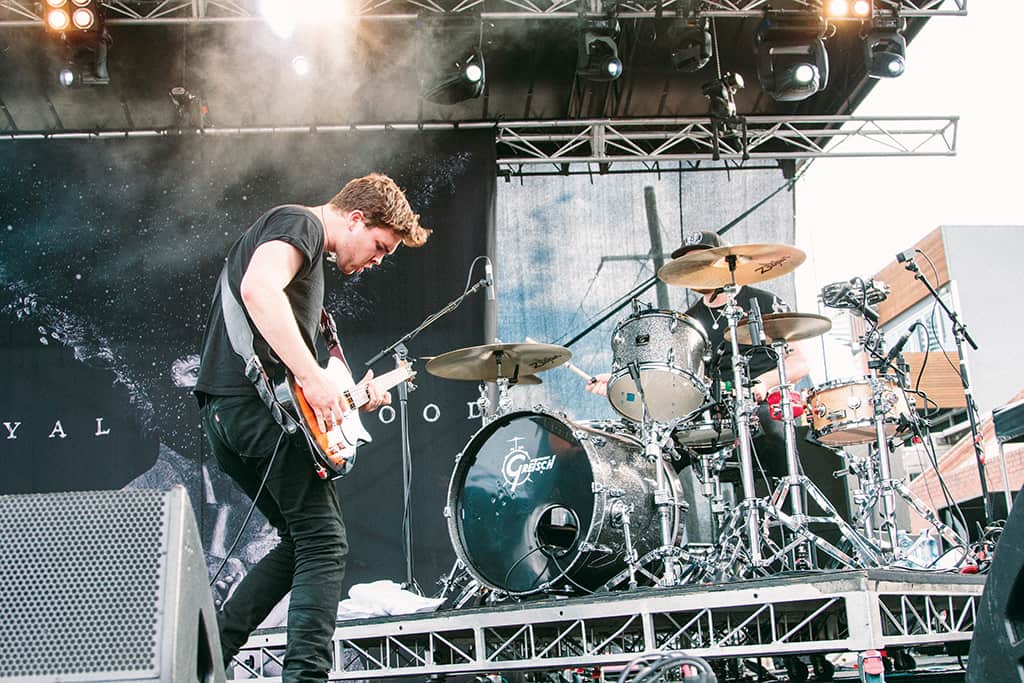
A ROYAL SMASHING
Royal Blood: FOH Engineer Phil Jones
Laneway at Melbourne was one of the first festivals I’ve ever been to where every show I saw sounded good. The only technical snafu was Flying Lotus losing his audio output for a minute… DJs. But talk to the engineers, and a lot of them would ask if you caught Royal Blood. Which I did. And the sound coming from just a bass/vocal and drums two-piece was disproportionately massive.
Phil Jones, who used to mix a lot of pop acts — Katy B, Taio Cruz, Icona Pop, Aloe Blacc — has been on the road with Royal Blood for 18 months. In that time, the production has gone from Jones driving a Sprinter van around the UK to a full home turf crew with a bus and truck. He also has a budget for ‘his toys’ now. He has been touring with a Midas Pro2C in the UK, but he’s in talks with Britannia Row to pull the old Pink Floyd Midas XL3 out of its training college and get it back on the road with a fully analogue setup for the UK Festival season and The Brits. “Why not?” said Jones. “It’s only 18 channels. Turn it up loud and squash it with some valves. You can be quite liberal with compression with Royal Blood because it’s in your face. I used to play jazz drums for a living, so I’m not necessarily a fan of using lots of compression, but you can make it sound massive, and that’s fun.
“It’s bits of compression here and there, and a parallel drum group that gets compressed quite a lot. At home I use a purple dbx 162SL stereo compressor as the parallel compressor on the drums. I also use an Eventide H3000 Harmonizer, and a Distressor. I love analogue, especially with a band like this, where it’s just tuning and the right mics in the right places.”
I bounced out the shows, and compared them with the two-tracks from the Profile — it’s just much wider on the S3L
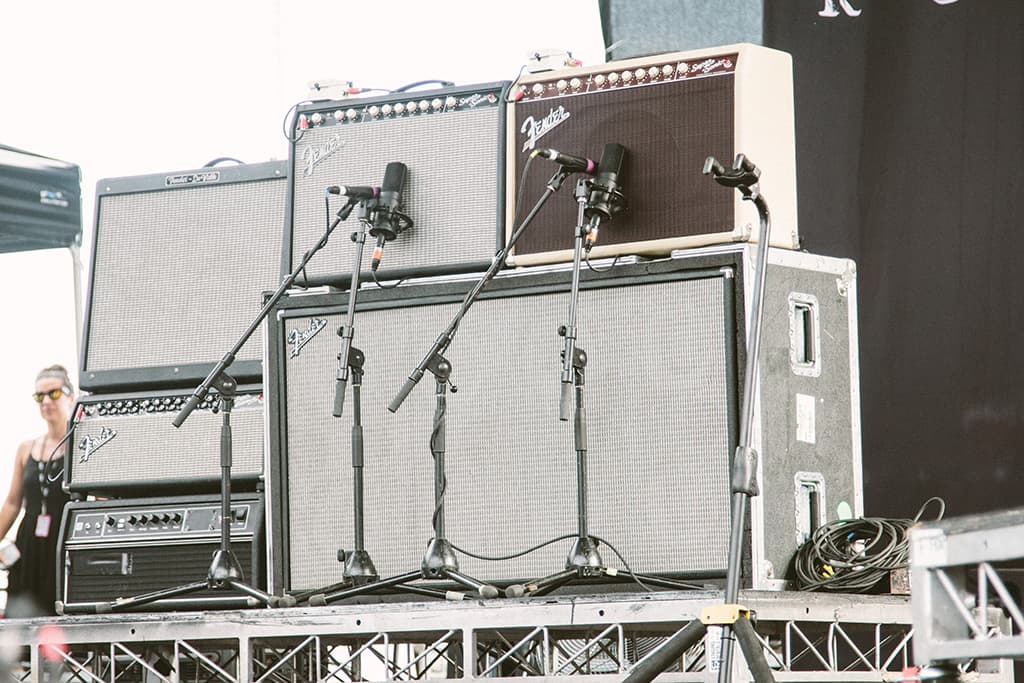

While he’s been ‘relegated’ to the Profile for Laneway, he still has all the mics in the right places. Vocalist Mike Kerr plays short-scale basses through a pedal chain centred around a couple of Electro-Harmonix POGs that make his instrument sound like a guitar, bass or both at the same time. Company policy says Jones can’t dish the specifics.
The result gets split across two Fender guitar amps and a bass amp with a dynamic and condenser on each guitar amp — a Shure SM57 and an Audio-Technica 4060 tube mic. “The whole sound of it,” explains Jones. “Is the first amp is hard-panned left/right, and the other one is right/left and acts as a thickener. It doesn’t sound panned, it’s just wide.
“There’s absolutely no delaying or phase. I played around with the Midas Pro2C’s little phase alignment tool for 45 minutes once, but it made it sound weird. We just use amp clamps to get the positions right.
“All the band — 16 channels of drums and bass — goes to the L/R output bus with a big fat limiter on it, and the vocal goes to groups. Then the left/right and the vocal groups go to a matrix. That way I can squash the band and keep the vocal above all that. Especially when you’ve got noise limits like this, it helps to contain it and keep the vocal sitting on top.
“I’ve got these really great tiny DPA 4099s on toms and bottom snare, which are very expensive. I was speaking to the UK distributor for DPA when we first started Royal Blood, and he insisted we take out the DPA d:facto vocal mic. I was like, ‘dunno, it’s a rock band and that’s a condenser, it’s not going to work.’ We tried it for a month, and it was just amazing. I used to use a Shure KSM9 a lot, which was great, but it just picks up too much for a band like this. It can be a feedback disaster. Whereas the d:facto is really tight. I’ve had him in 300-cap clubs in line with the PA, and it’s fine.”
One of the more interesting mic positions, is one only the band gets to hear. “On each side of the stage, there’s an Audio-Technica 8022 mic for in-ears ambience,” said Jones. “Dave, our monitor guy, usually has two of them set up, one on each side. It’s a stereo mic, but he’s got one side facing the band, and one side to the audience. So he can feed either crowd ambience or band ambience to the ears. It’s a bit fancy, but the boys love it. That said, Mike still pops out his ears… and we’ve still got side fill… We’re trying.”

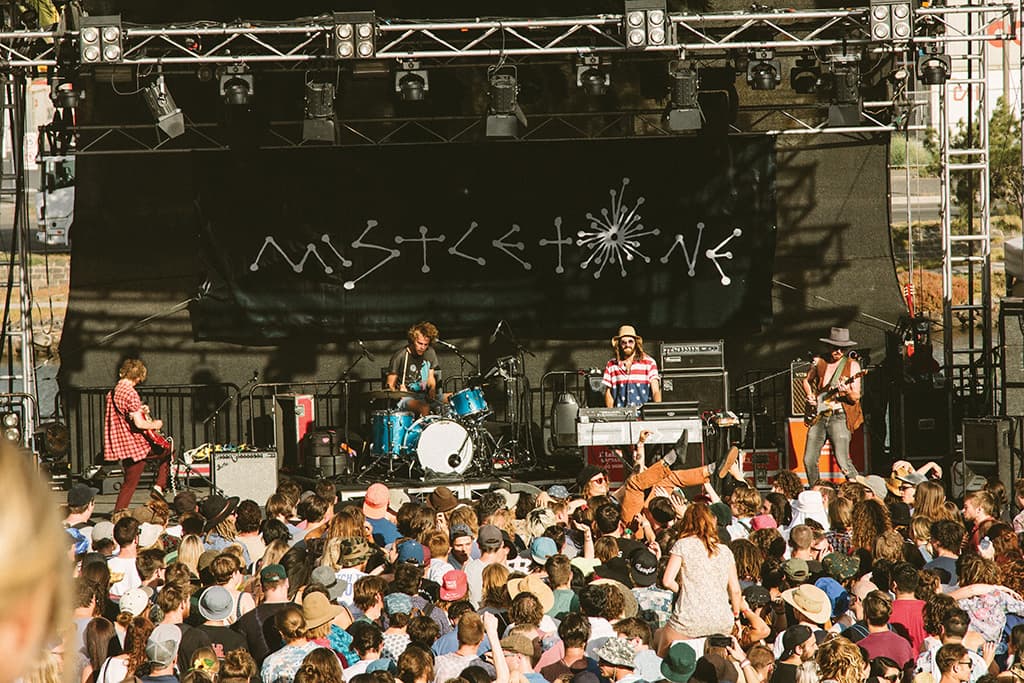
SMALL FISH, BIG POND
Pond: FOH Engineer Adam Round
When West Australian engineer Adam Round mixes Tame Impala, he tours with a stage setup devised over days of pre-production, and his favourite Digico console. When he tours with Pond — another Western Australian band with some Tame members — it’s a different console every night. For Pond’s Laneway shows he only has a gain snapshot for the Profile, which keeps it all pretty rock ’n’ roll. “Tame’s very different,” said Round. “Lots of snapshots and cueing through sections, pre-production every time, and virtual soundcheck to go in deep with the automation without having to play a song 10 times to get each bit right.”
There are some common elements between the bands though. “Both bands have quite a smashed drum sound on the record. It’s the sound of mic pres getting driven really hard, then attenuated, and loads of compression. I try and emulate the sound of the records the best we can in a live scenario without feeding back the whole gig. There’s a comp on every channel of the drums, and gates on all the close mics that feed the drums group.”
With Tame Impala, Round gets to create the effect with more acuity. He gets fed wet drums, which are processed on stage with a Metric Halo interface, dbx 165s, and other gear. Head Impala, Kevin Parker, used to force Round to use a Shure SM57 on kick, an intrinsic part of Parker’s recording process. But he’s since relented and it’s now Sennheiser 9 series across the whole show, which is what Round prefers. “We do use quite a bit of EQ to get it to do what it does, and loads of compression. They are quite a polished-sounding microphone, so I open it up and introduce all the extra harmonics with distortion. The wet drums go through the Waves EMI TG12345 strip, Scheps 73 EQ and Waves J37 tape plug-ins. I gate it all with the SSL strips first, smash the hell out of it into the mic pre, then squish it, and squish it again on the drums bus. It’s quite a lot of work to get the records to come to life. But it’s so much fun, and I get a real kick out of trying to find new ways to get the same colours.”
But back to Pond, now a four-piece after losing bassist Cam Avery from the lineup just prior to the Laneway tour, which required some fast rearrangement. There are five keyboards on stage, including a Dave Smith Instruments Prophet 08 and an old Tandy Realistic synth. And now, most of the bass lines have fallen into the realm of keyboardist Jamie Terry and his Moog Sub Phatty, while the keyboard workload has been spread around. With a collection of pads and stabs ported over to a Roland SPD-SX for drummer Jay Watson to trigger during the set.
“It’s sometimes a little easier to deal with to be honest,” said Round of the new synth bass. “It still gets run through a Sansamp. And if I’m on my console of choice, being Digico, I can drive it up pretty hard and get a bit more ‘grrr’ out of it, as well as using all the Waves plugs.”
While Pond may not have an elaborate onstage drum chain, the occasional wet vocal gets sent down the multi-core via a Roland Space Echo pedal. It gives at least some continuity when playing console musical chairs. Without continuity in his effects, Round typically shoots for a “short room on the drums, about 700ms, just to open them up a whisker without actually hearing the reverb. I also sit a small hall reverb on the whole show to give you an impression of a room, and use a really long hall for the epic tracks. I typically have three drum reverbs that get changed throughout the show, two vocal reverbs, two delays — a long delay and a slap, along with the wet vocal. It all gets pretty wet and fun.”
Round was mixing on the Misteltone Stage, a natural amphitheatre where the FOH tent is stationed towards the top of a steep incline, meaning the top box of the JBL Vertec system is “hitting you in the nut sack. It’s pretty barky, but -12dB at 4kHz, and -10dB at 3 and 5kHz had it sounding pretty good to me up there.
“At festivals I always make sure I have the PA on during line check, it just has to happen. Because it’s so wet up there, and you don’t know what you’re walking into — especially in other parts of the world, where it might not be quite as pro, and we don’t all speak the same language. It’s mainly just to hear kick drum, bass and your vocal, and where possible I’ll also tune it with my voice. Today it was just a bit of kick, bass, and wet vocals to hear how it’s going to react. And after touring for quite a while with Hando [Pond’s monitor engineer] I recognise the sound of his voice, and what it should sound like on a fairly flat system. You can work pretty fast. It took us about 30 seconds to tune up today, and it was pretty close. Just to hear it once and know you need -6dB on your subs, for instance. I run matrixed subs if possible, especially in multi-console scenarios.
“I prefer to matrix the PA to use the subs as colour throughout the set. Take a song like Don’t Look at the Sun or You’ll Go Blind, which is arranged like a banging dance track. To make that style of music sound the way you want it, you need a bit more bottom end. So I actually ride the parts of the PA throughout the gig as well as the mix. We’re not chasing consistency, where every drum sound and song sounds identical, it’s not that kind of band. It’s about using the tools you have to create shades and colours.”





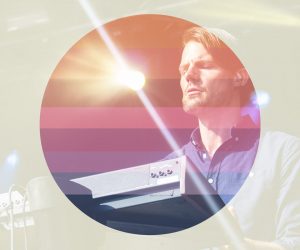

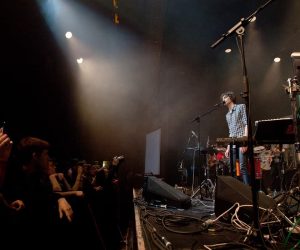








RESPONSES